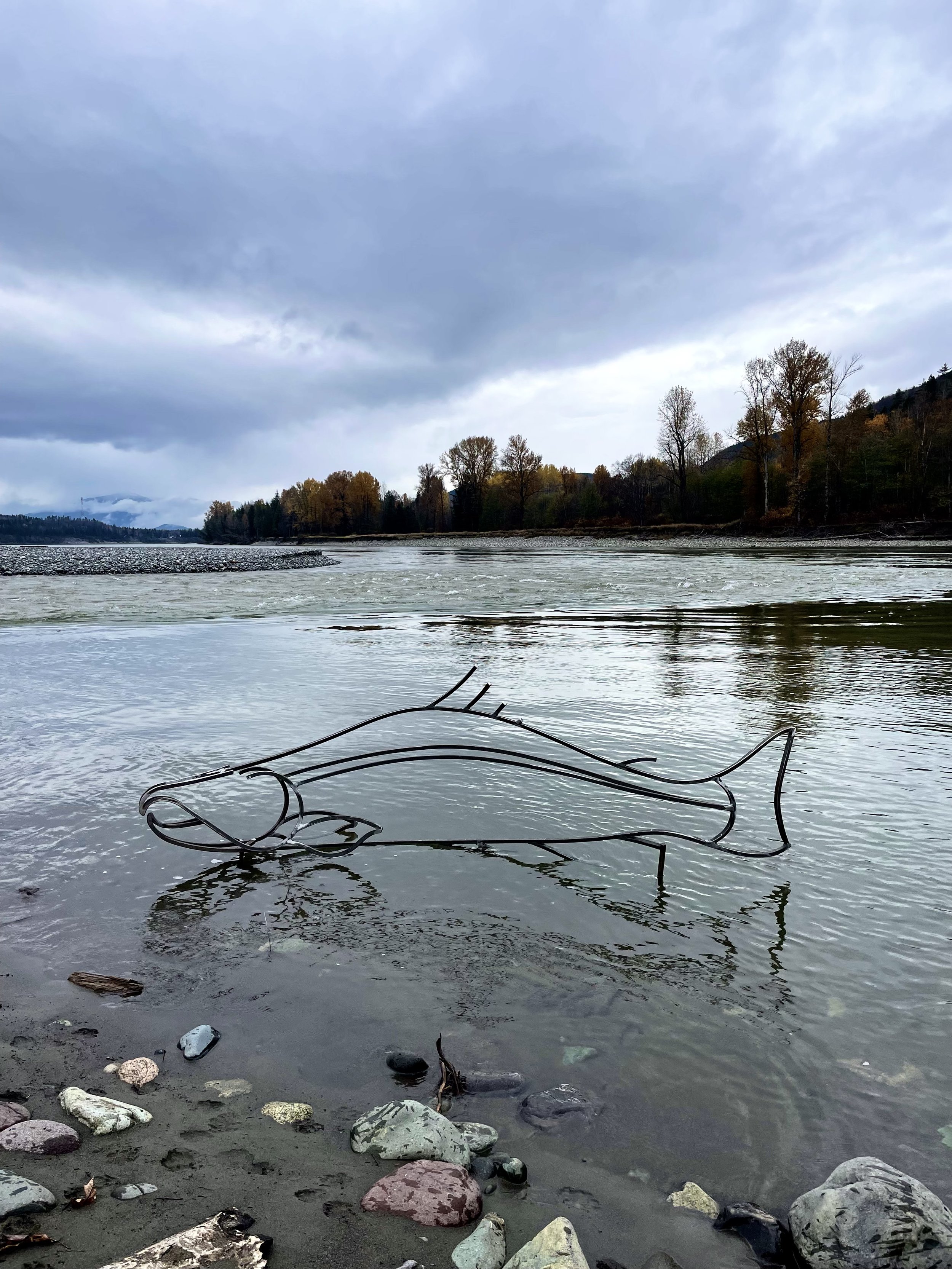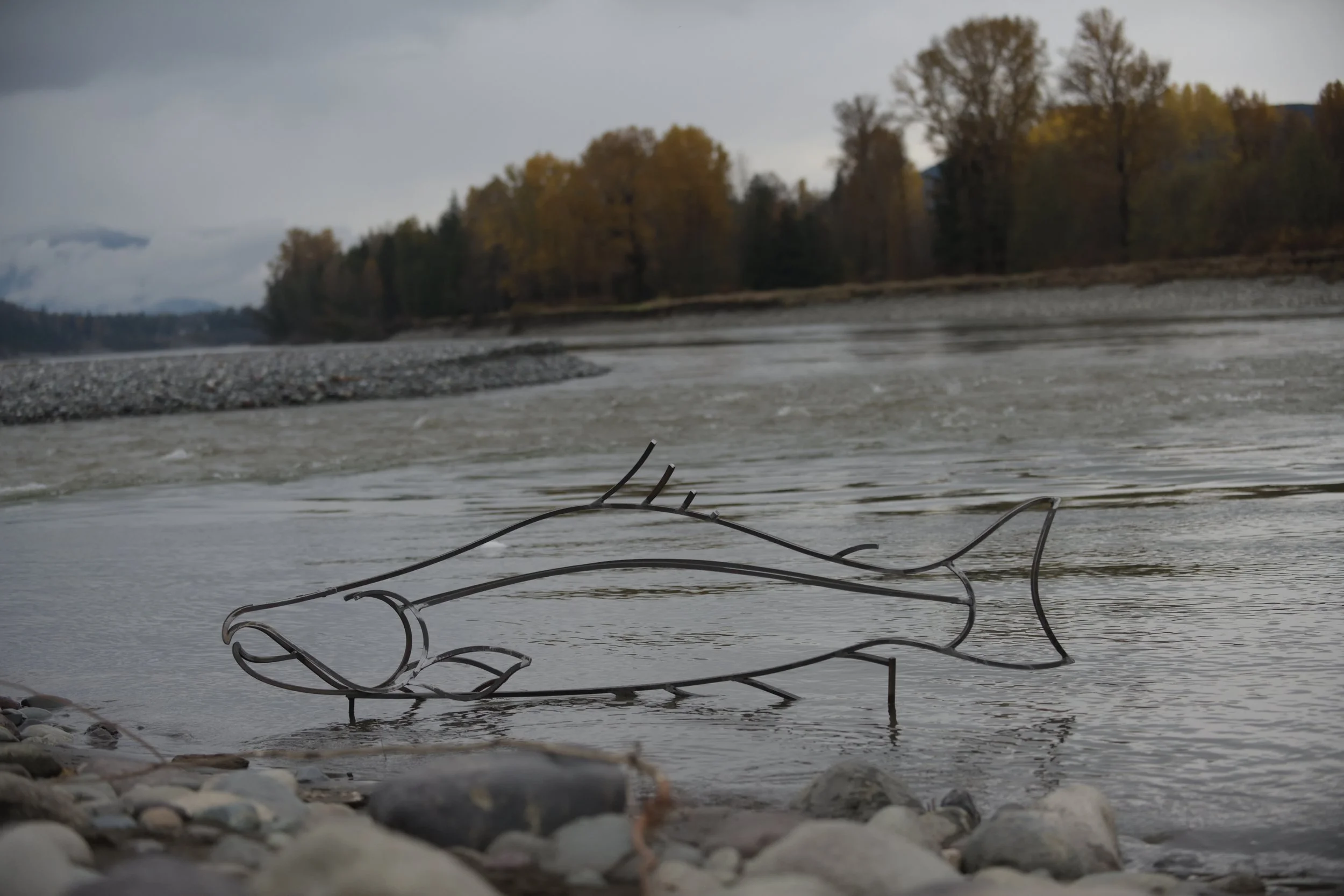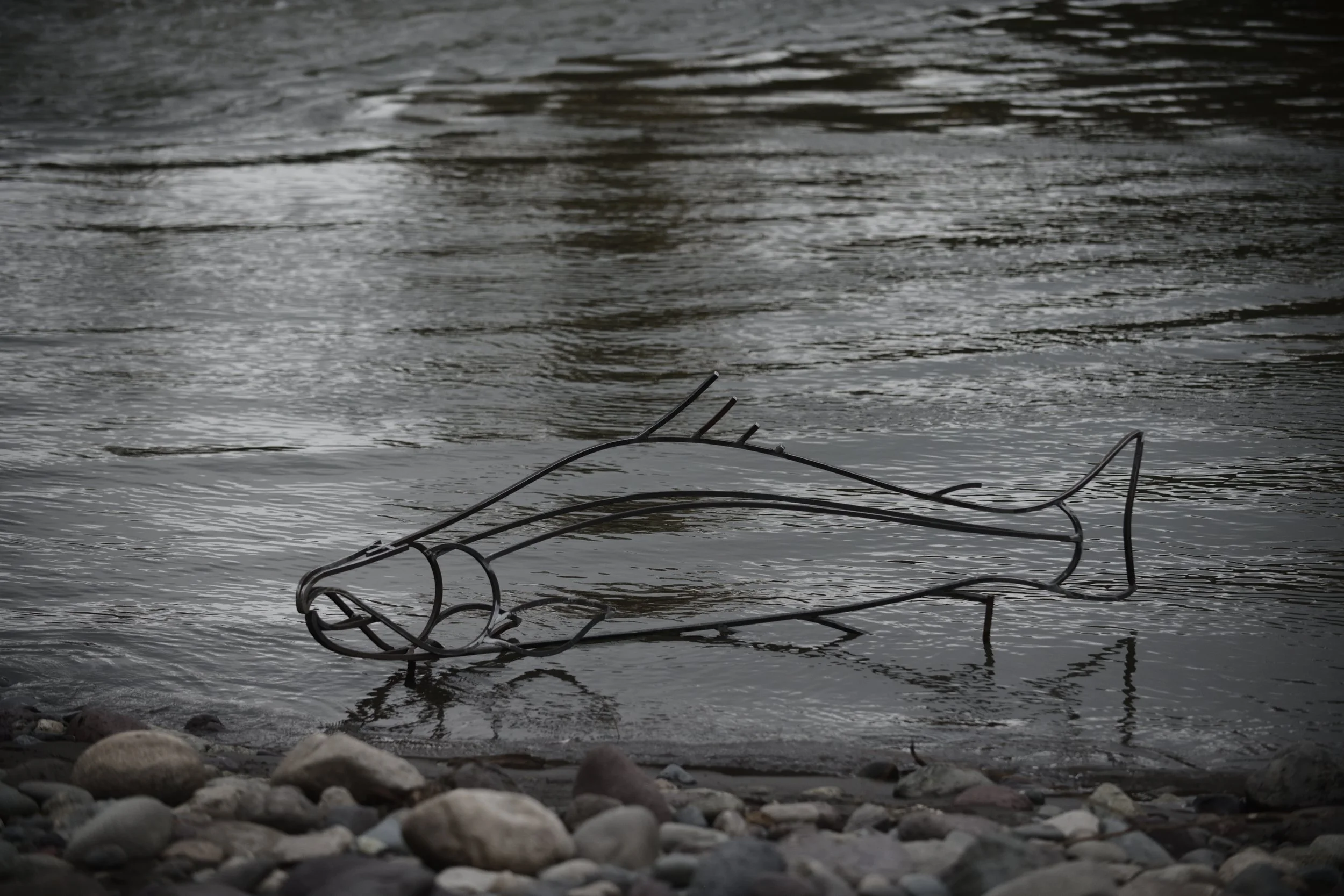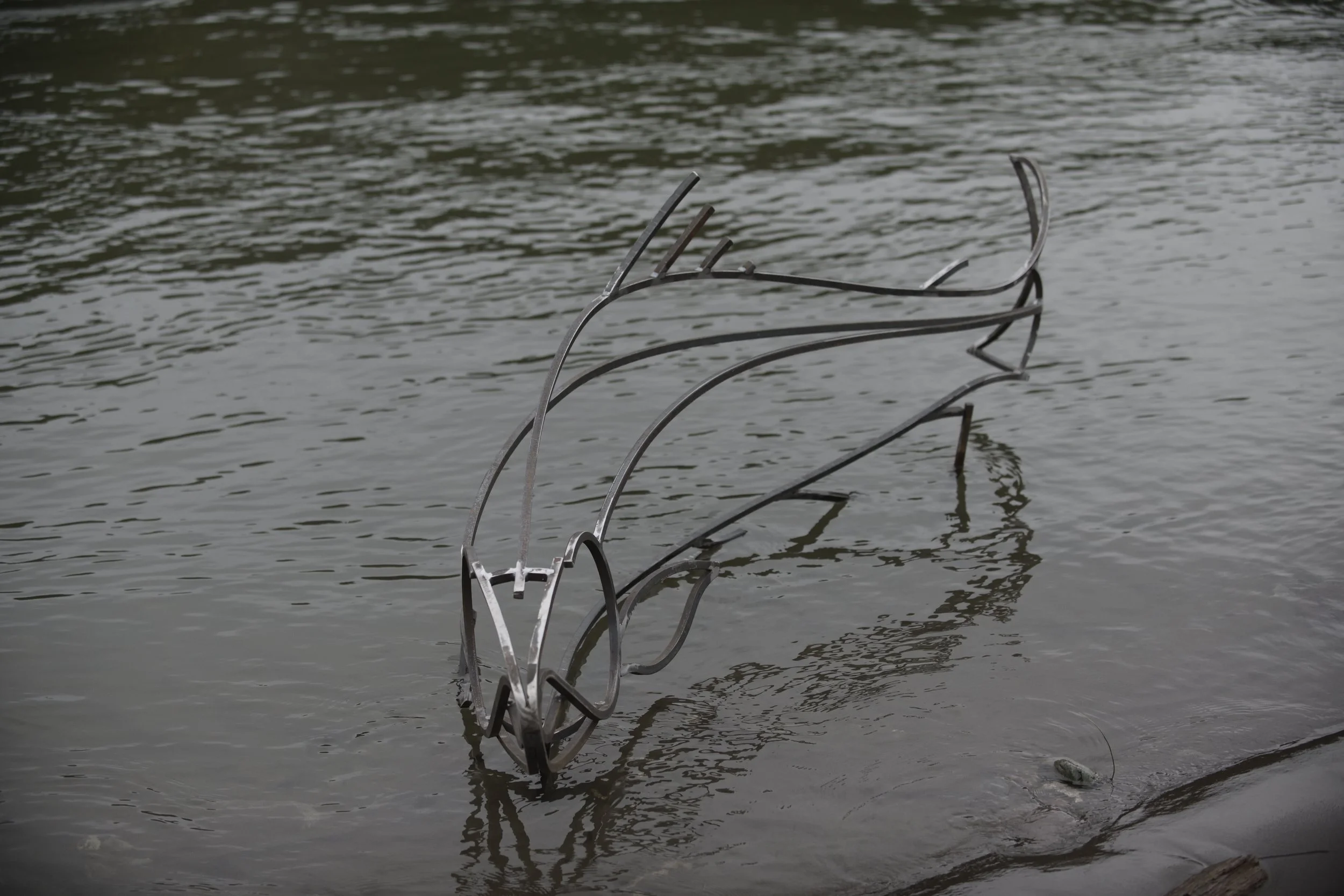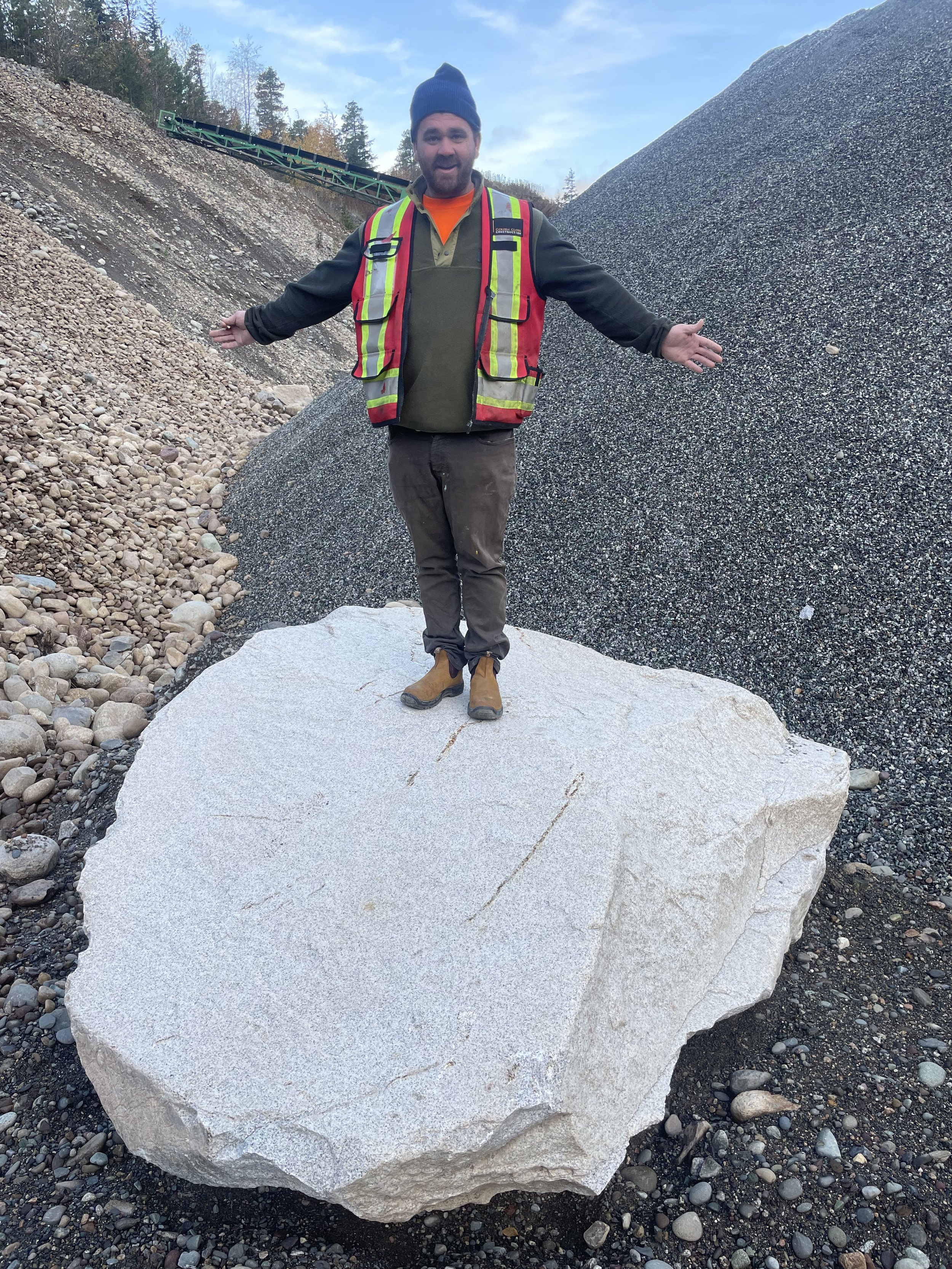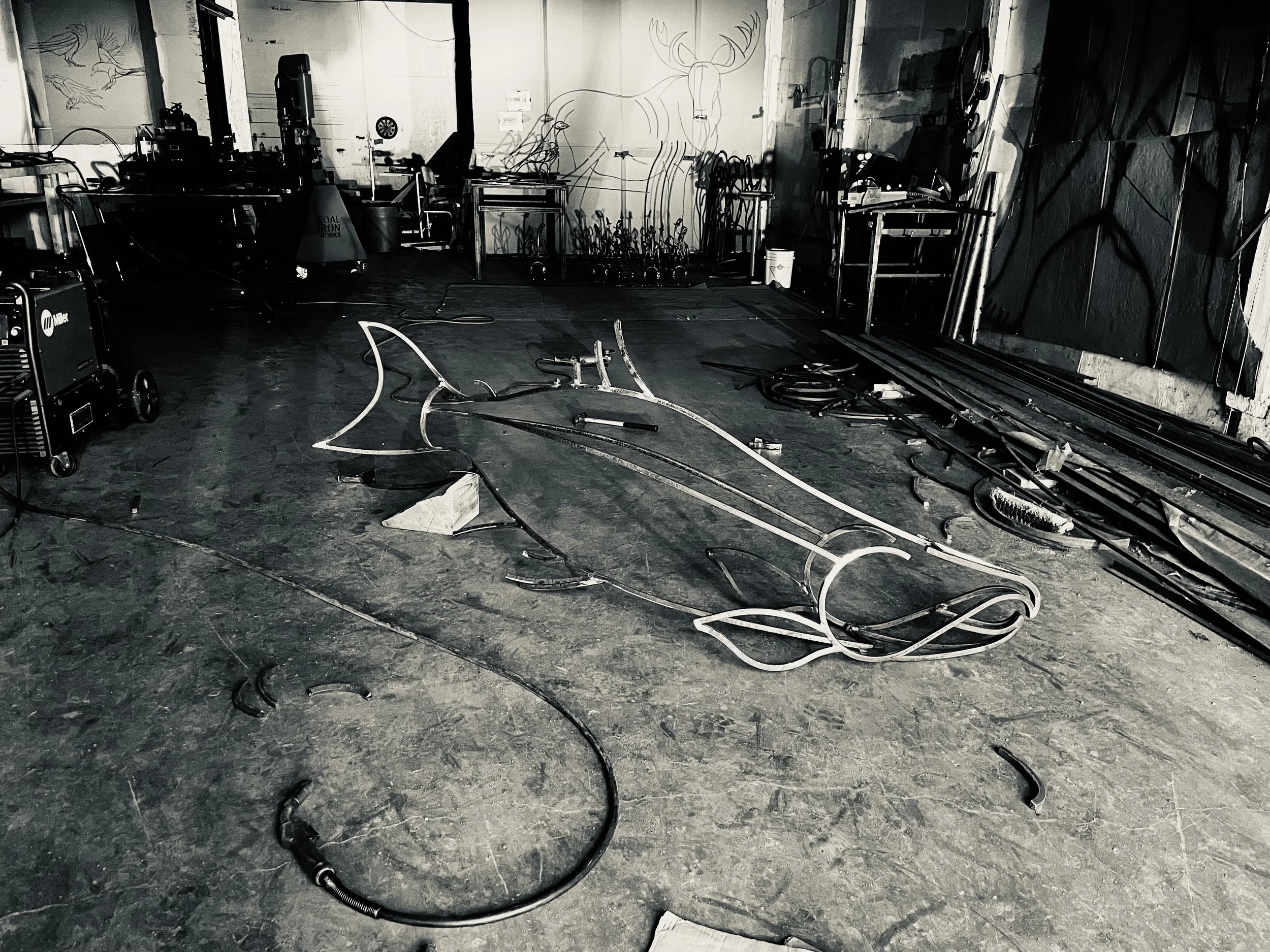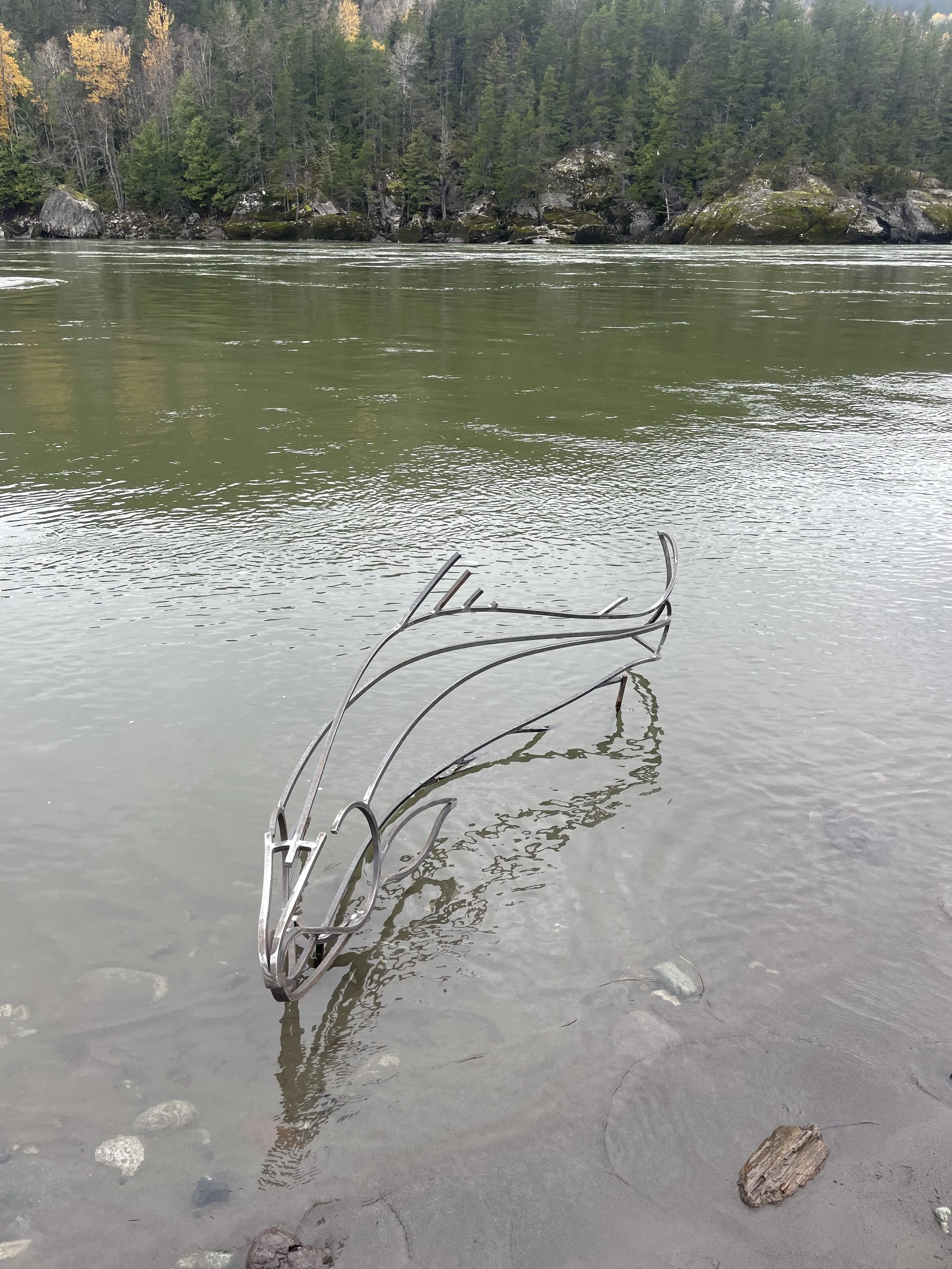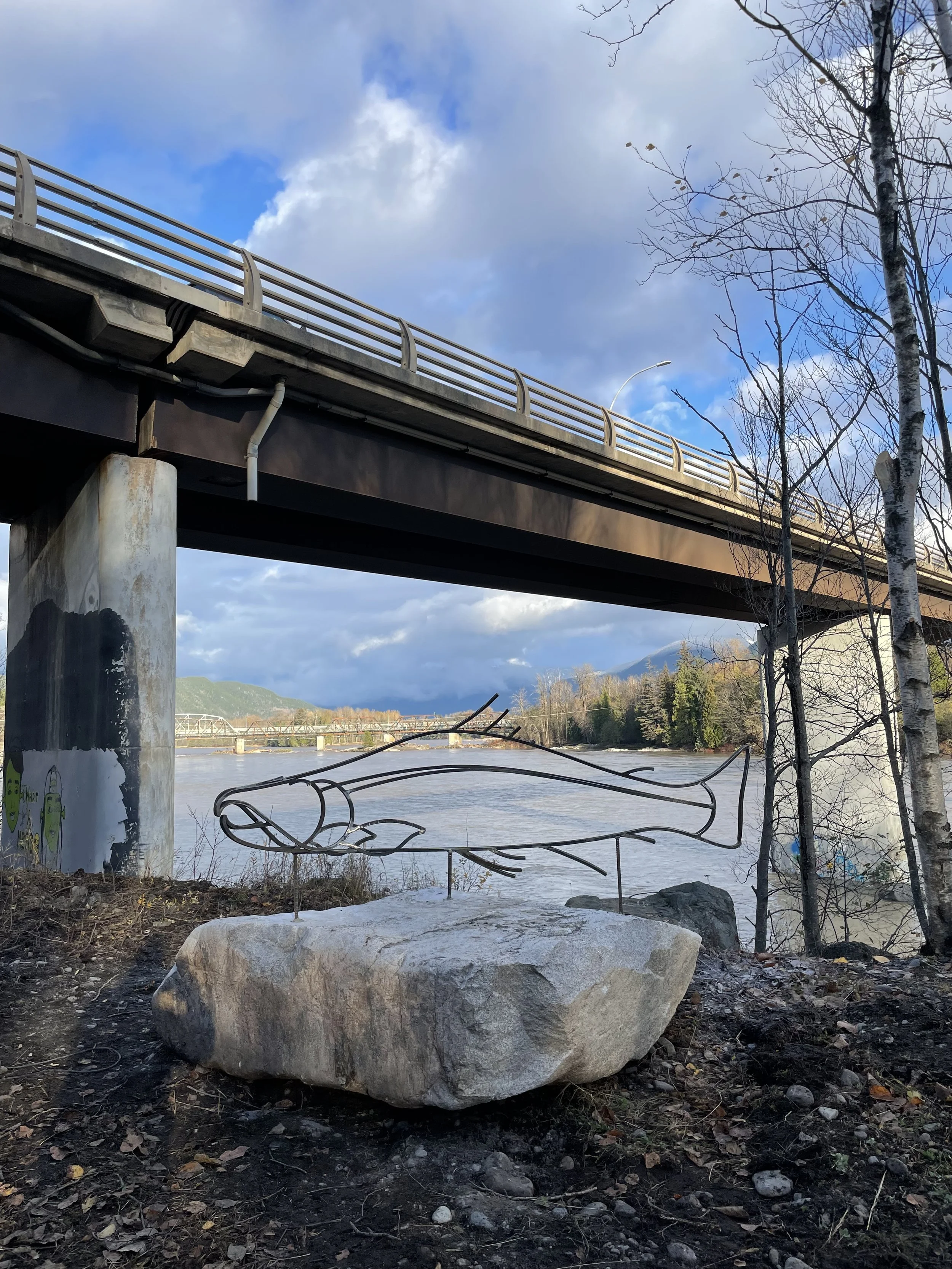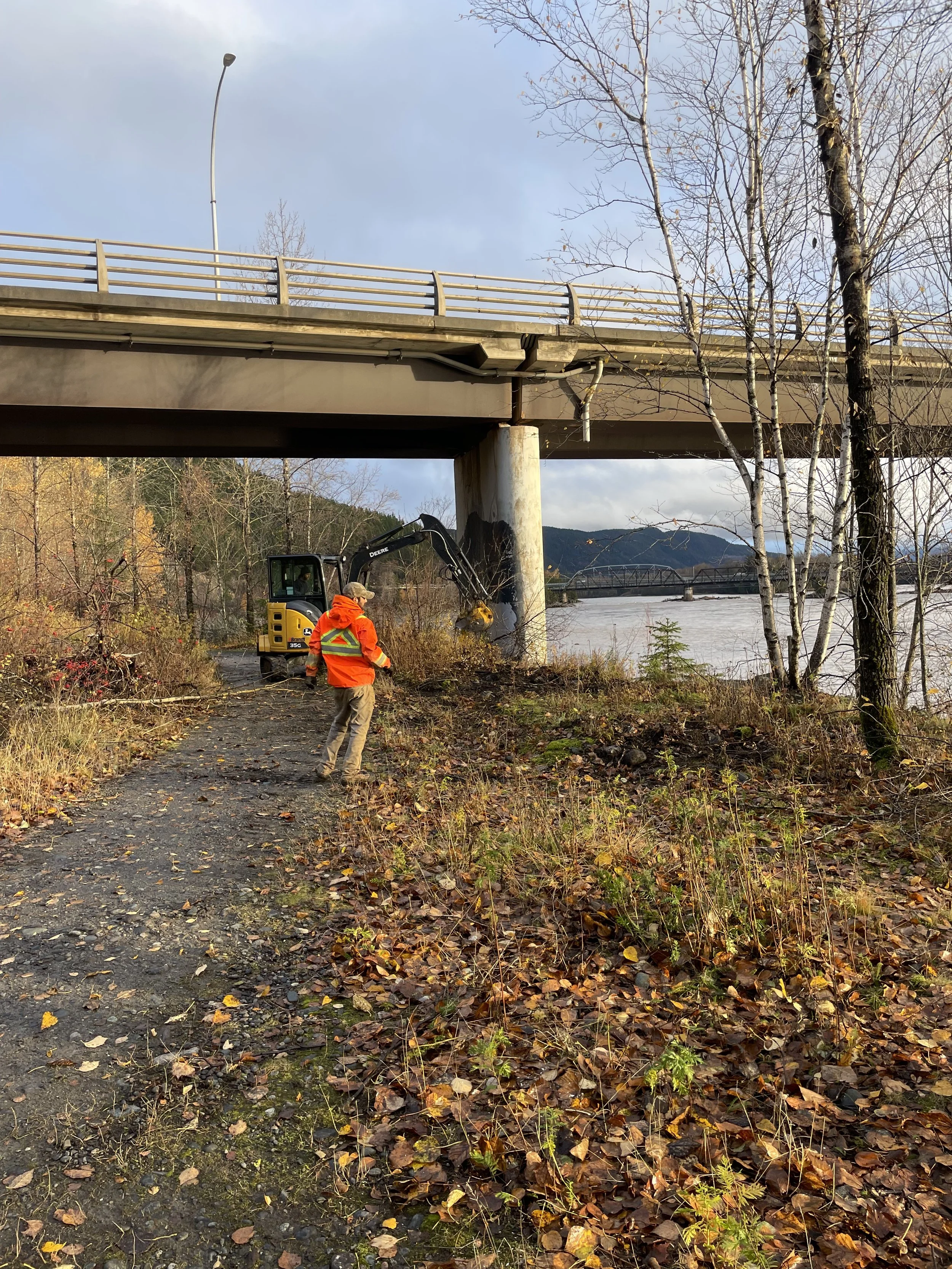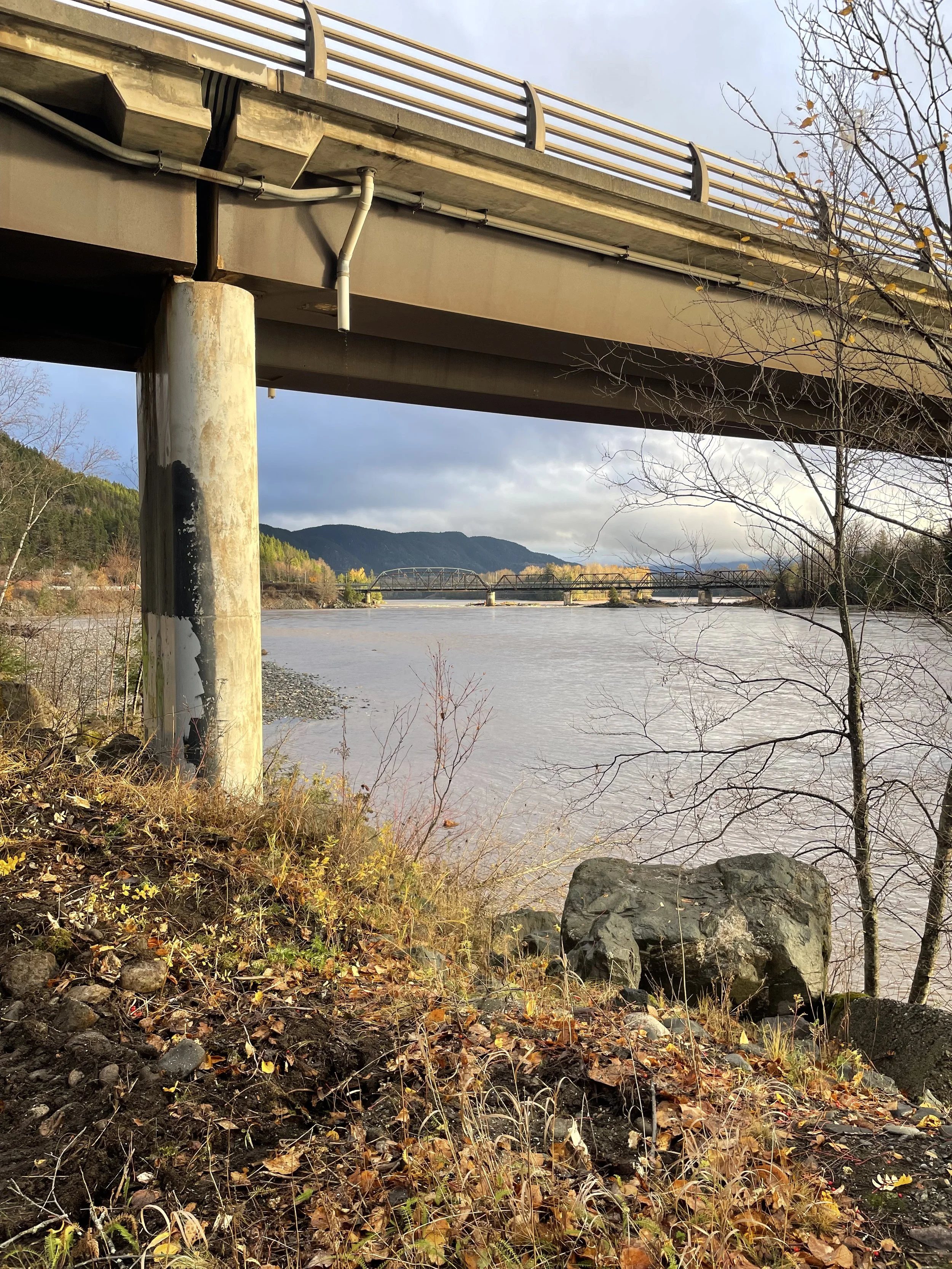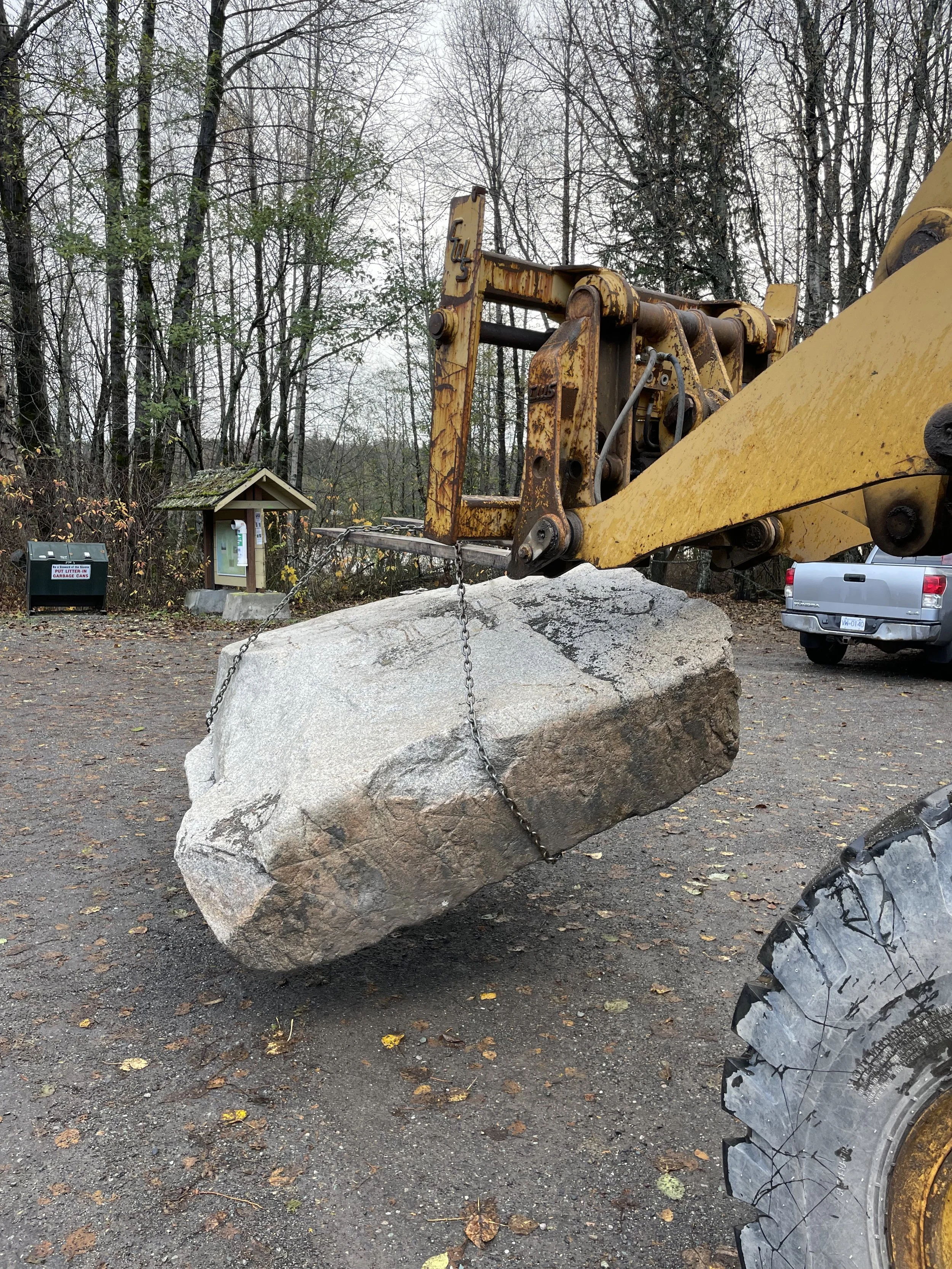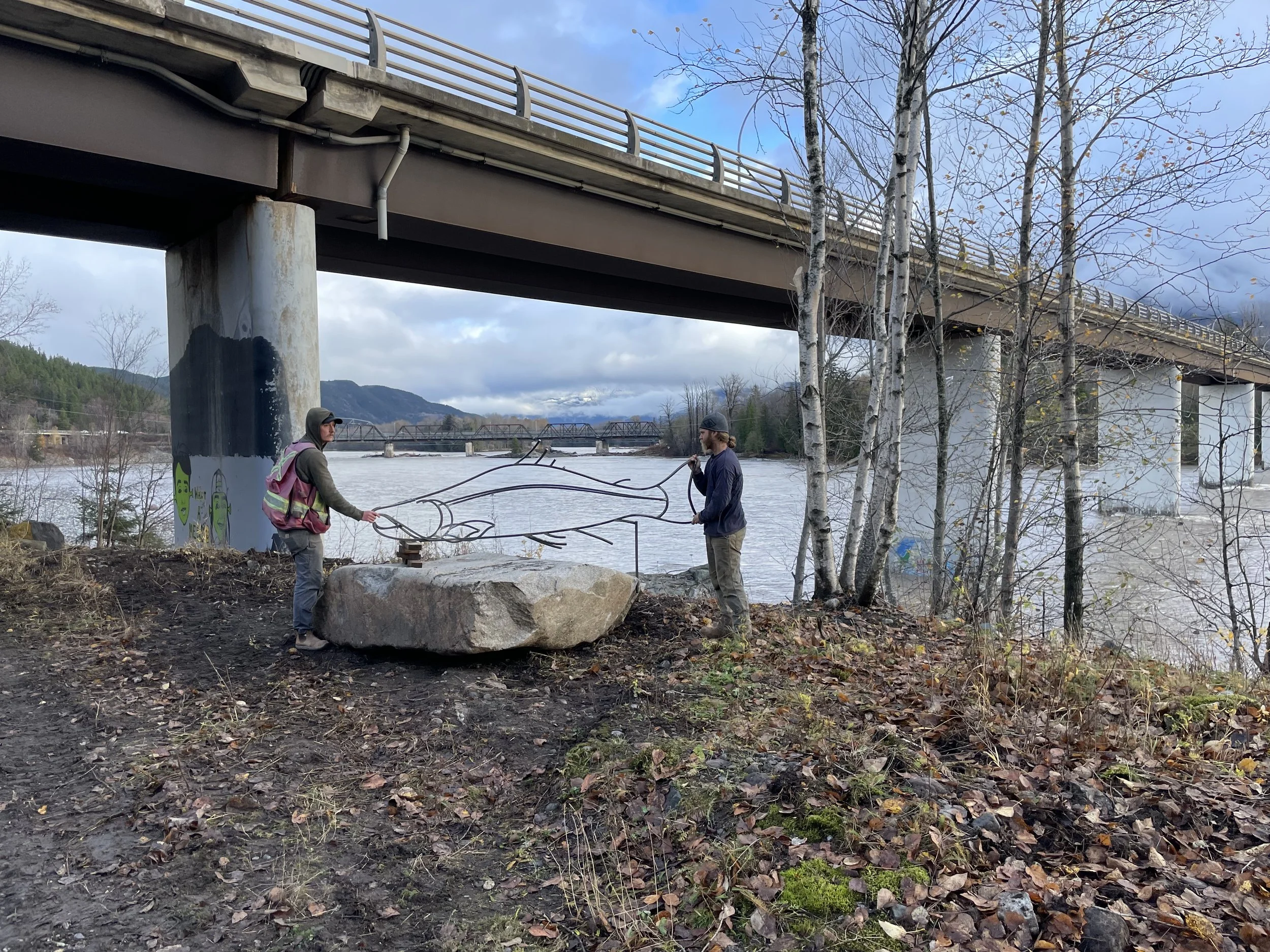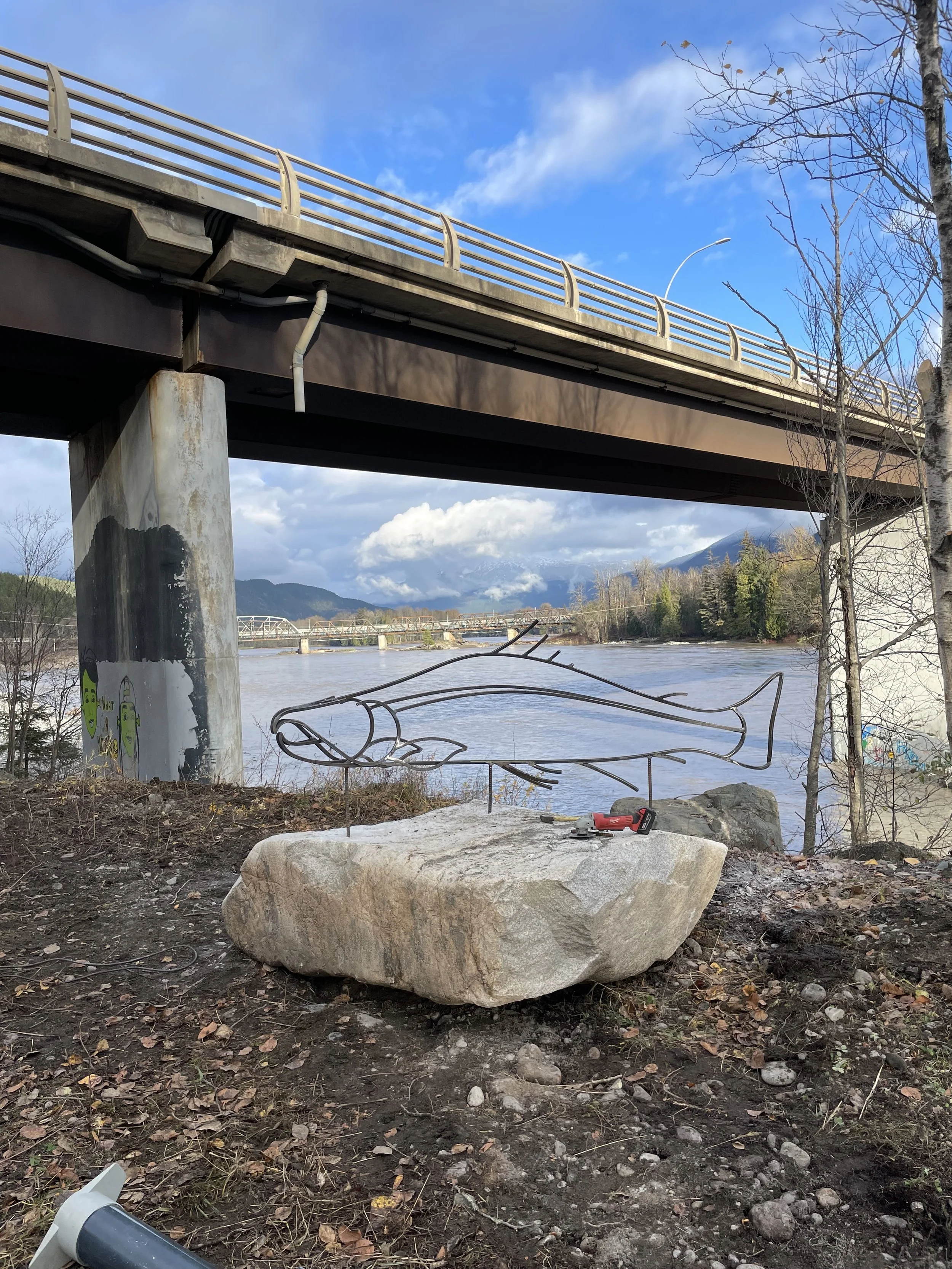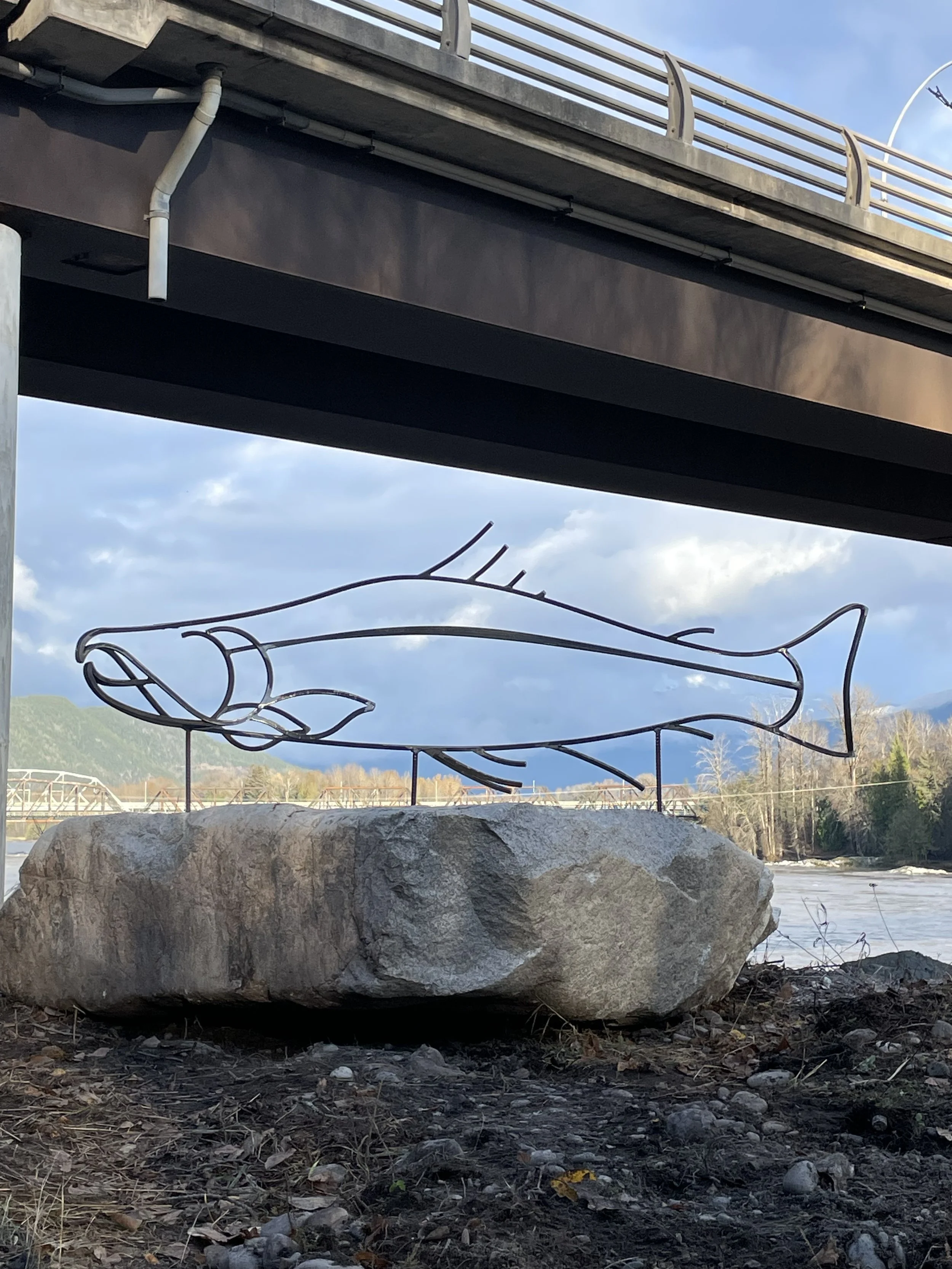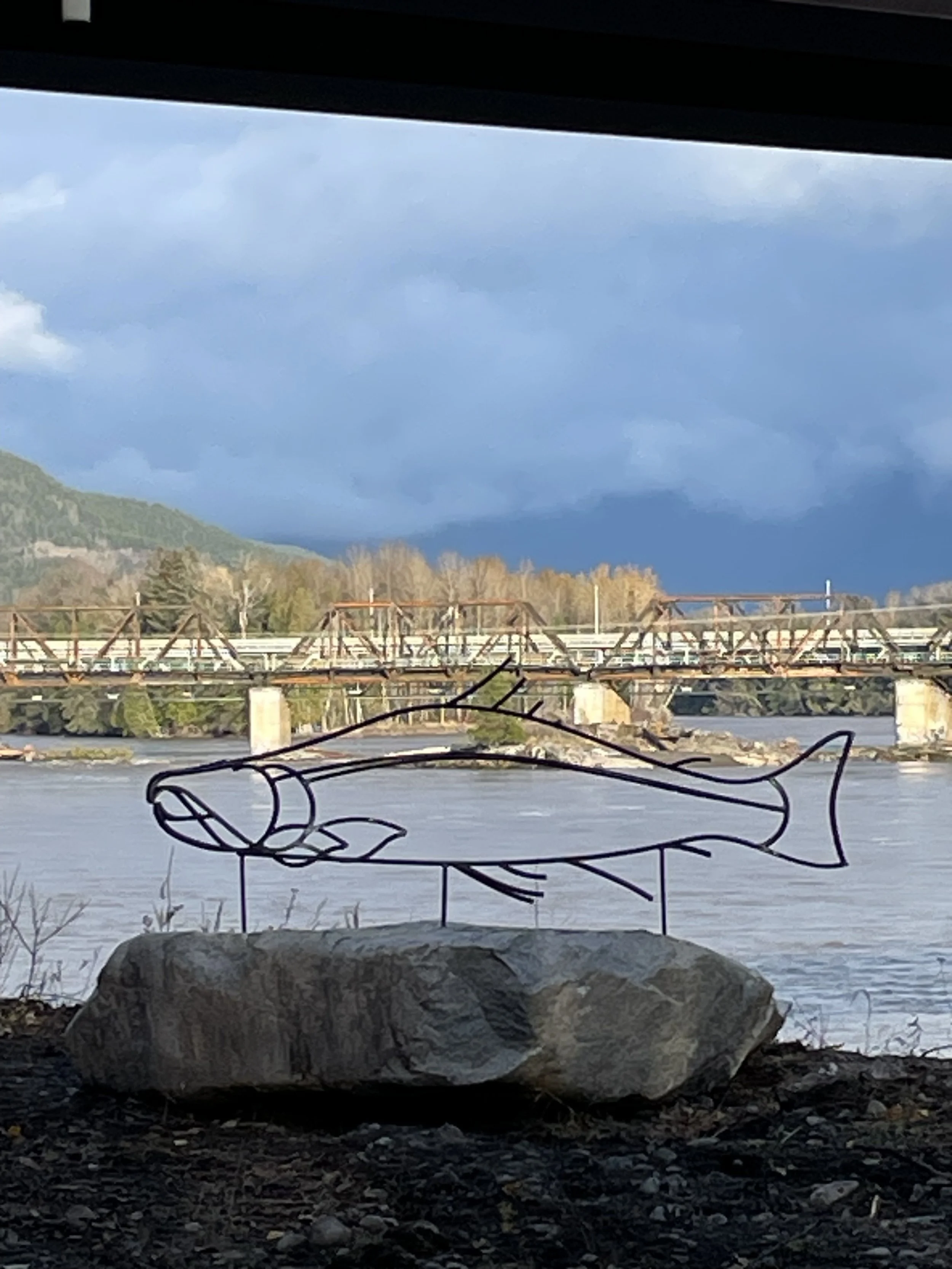Salmon Sculpture
Sockeye Salmon Installation at Ferry Island Trail Network
In collaboration with the Terrace Community Forest, Great Bear Ironworks created a striking three-dimensional Sockeye Salmon installation for the Ferry Island Trail Network. The Sockeye Salmon holds profound significance in the Northwest, representing not only a vital source of food but also integral to the livelihoods and cultures of the region. The Skeena River, renowned for its salmon runs, plays a central role in sustaining both the ecosystem and the communities along its banks.
The life cycle of the Sockeye Salmon is a remarkable journey that reflects the interconnectedness of the region's ecosystems. Born in the freshwater streams and rivers of the Skeena watershed, Sockeye Salmon hatch and migrate to the ocean, where they spend several years growing. After reaching maturity, they return to their birthplace to spawn, completing a life cycle that is vital for the continuation of their species. This return journey is symbolic of the resilience and tenacity of life, as well as the cyclical nature of the natural world. The salmon’s migration provides crucial nutrients to the river systems, enriching the surrounding environment and supporting a diverse array of wildlife, including bears, birds, and humans.
Working alongside the City of Terrace, we secured a prime location for the installation, clearing the area to ensure the fish would be displayed in harmony with its natural surroundings. The Salmon sculpture was then mounted upon a locally sourced granite boulder, further grounding the piece in the region’s natural beauty and cultural heritage.
This installation serves as a tribute to the Sockeye Salmon’s vital role in the local ecosystem and its deep cultural connections. It celebrates the salmon’s life cycle, which sustains the natural environment and forms the foundation of the cultural practices and traditions of the people in the Northwest. This installation stands as a reminder of the importance of protecting the integrity of the river and the creatures that rely on it.
Learn more about conservation efforts in the region by visiting SkeenaWild Conservation Trust.
